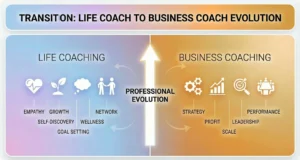Imagine stepping into a workplace where people are excited to tackle challenges, where ideas flow freely, and where each person feels like they’re making a real difference. It’s a place where employees don’t just show up they’re engaged, innovative, and deeply connected to their work. Behind this thriving environment is a leader who knows that true empowerment isn’t about micro-managing every detail. Instead, it’s about creating a space where people feel confident to take initiative and make meaningful contributions.
Effective leaders understand that empowerment is more than a one-time gesture; it’s an ongoing commitment to helping each team member reach their potential. From giving employees ownership over their projects to encouraging personal growth, leaders who focus on empowerment don’t just improve morale they elevate the entire organization.
In this guide, we’ll dive into ten powerful ways leaders can foster a culture of empowerment, helping their teams become more engaged, resilient, and ready to drive success.
10 Smart Ways To Empower Employees Through
Autonomy and Ownership
When leaders give employees more control over their projects, they’re not only assigning tasks they’re empowering people to take real ownership. Start by setting clear goals so employees know what success looks like. From there, let them decide the approach. Instead of directing every step, offer guidance when needed, but trust them to make key decisions. This space to think independently transforms tasks into opportunities, where employees can explore solutions, solve challenges, and adapt their own processes.
Autonomy drives accountability. When employees know they’re trusted with decisions, they feel a stronger responsibility for their work and are more motivated to see projects succeed. They understand that their choices have a direct impact on the outcome, building engagement and pride in their contributions. This approach helps employees grow beyond their roles, inspiring innovation and commitment across the team.
In the long run, empowering employees with autonomy encourages them to think creatively, make thoughtful decisions, and stay connected to their work. It builds a team of independent thinkers who are fully invested in the company’s success.
Skill-Building Opportunities

Leaders empower their teams by investing in their growth. Providing skill-building opportunities, like workshops, training programs, or even certifications, communicates a powerful message: we believe in your potential. This can begin with simple steps understanding employees’ career goals and identifying areas they want to explore. By connecting these learning opportunities to their roles or future aspirations within the company, leaders help employees feel both valued and prepared for what’s next.
Skill-building isn’t solely about expanding knowledge; it’s a demonstration of trust in their potential. When employees see that their development is a priority, their loyalty and motivation naturally grow. They understand that the company values them beyond immediate tasks and sees a future with them as part of the team. This sense of growth creates a workplace where people aren’t just working they’re progressing.
By empowering employees through skill-building, leaders create a culture that values learning and personal advancement. It’s a cycle that benefits everyone: as employees gain new skills, they bring fresh energy, ideas, and perspectives back into their work.
Delegating with Development in Mind
Empowering employees isn’t just about assigning tasks; it’s about thoughtful delegation that helps them grow. Leaders can do this by entrusting employees with responsibilities that stretch their skills tasks that may be slightly beyond their comfort zones but achievable with effort. This approach turns everyday work into opportunities for development, where employees can learn by doing and gain confidence in new areas.
Delegation with development in mind requires more than simply handing off work. Effective leaders provide supportive feedback and mentorship along the way. This guidance helps employees navigate challenges and feel assured that they’re making progress, even if mistakes happen. When leaders show they’re invested in their team’s growth, employees feel more motivated and engaged, knowing they have a safe space to improve.
This approach builds a growth-focused team. By delegating with purpose, leaders foster a sense of accomplishment and readiness, empowering employees to take on more complex responsibilities over time. It’s a strategy that not only advances projects but also nurtures a team of capable, confident professionals.
Encouraging Cross-Functional Collaboration
Leaders can empower employees by facilitating cross-functional collaboration creating opportunities for team members to work with different departments and see their impact across the organization. Whether it’s through joint projects, job shadowing, or knowledge-sharing sessions, these collaborative experiences build diverse skills and broaden perspectives, showing employees the bigger picture.
Cross-functional collaboration enhances problem-solving. When employees work with different teams, they’re exposed to new ways of thinking and unique approaches to challenges, which they can bring back to their own roles. Leaders can encourage this by highlighting projects that would benefit from diverse input and supporting teams as they adapt to new perspectives.
Encouraging employees in this way doesn’t just improve their skills; it fosters a sense of belonging. They’re no longer limited to their own tasks but can see how their contributions fit into larger goals, boosting engagement and making their work feel more purposeful. Over time, this creates a workforce that thinks strategically and collaborates seamlessly across the organization.
Creating a “Safe-to-Fail” Environment
Empowering employees often begins with fostering a “safe-to-fail” environment a space where calculated risks and learning from mistakes are not only allowed but encouraged. Leaders can set this tone by communicating that mistakes are part of growth and by focusing on the lessons learned rather than solely on outcomes. When projects don’t go as planned, leaders who model resilience by openly sharing their own experiences with setbacks create a culture where learning is valued.
In a safe-to-fail environment, employees feel confident experimenting with new ideas and approaches without fear of harsh repercussions. This freedom sparks creativity and allows for true innovation, as team members know that even if something doesn’t succeed, it will be an opportunity to improve. Leaders can reinforce this by encouraging employees to share insights from challenges, creating a learning-oriented team culture.
This environment builds a resilient, growth-focused workforce that isn’t deterred by setbacks. Employees feel trusted to explore new ideas, knowing that they’re supported and valued for the effort they put in. Ultimately, a safe-to-fail culture empowers employees to take meaningful steps toward improvement and success.
Transparent Goal-Setting with Shared Accountability
Leaders can empower their teams by involving employees in setting clear, transparent goals and encouraging shared accountability. Rather than imposing objectives, leaders can invite employees to help define team goals, breaking down big-picture aims into actionable steps that everyone understands and supports. This approach transforms goals from top-down directives into shared missions, giving each team member a real stake in the outcome.
Transparent goal-setting also creates alignment. When everyone is aware of the targets, team members can stay focused on what matters most, helping one another remain accountable and reinforcing mutual support. Instead of relying solely on managers, employees feel empowered to support each other’s progress, fostering a culture of trust and mutual responsibility.
This shared accountability deepens commitment. Employees feel more engaged and motivated when they see that their contributions impact team success. By involving employees in the goal-setting process and encouraging peer accountability, leaders create an environment where everyone feels both valued and responsible.
Recognition and “Growth-Centric” Feedback
Empowering employees doesn’t stop at recognizing achievements; it involves offering feedback that fuels growth. Leaders can strengthen their teams by providing “growth-centric” feedback highlighting specific actions and improvements while also guiding employees toward future development. This type of feedback shifts the focus from merely acknowledging performance to actively supporting each team member’s potential.
Recognition plays a big role in this approach. Instead of general praise, calling out specific accomplishments or improvements shows employees that their unique contributions are noticed and valued. When an employee is recognized for a creative solution, strategic thinking, or even resilience during a tough project, they feel truly seen. This individualized approach to recognition boosts confidence and reinforces positive behaviors.
Growth-centric feedback goes a step further by offering actionable insights for continued improvement. Leaders who combine recognition with practical guidance such as skills to develop or ways to enhance strengths—create an empowering cycle of learning and progress. This focus on growth builds trust and encourages employees to approach their roles with curiosity and ambition, knowing they’re supported in their professional journey.
Encouraging Employee-Led Initiatives
Empowering employees often means giving them the freedom to lead initiatives that align with their interests and the company’s needs. Leaders can encourage this by inviting team members to propose projects whether it’s improving processes, launching a wellness program, or driving a social responsibility effort. By enabling employees to take the reins on ideas they’re passionate about, leaders create a workplace where innovation and ownership thrive.
Employee-led initiatives offer a double benefit: they allow team members to apply their unique skills and creativity while also addressing real organizational goals. Leaders can support this by providing guidance, resources, or mentorship without micromanaging, allowing employees to make impactful decisions. When employees see their ideas valued and brought to life, they feel a deeper connection to their work and the organization.
This approach fosters a culture of trust and autonomy. Employees become not just contributors but active drivers of positive change, bringing fresh energy and diverse perspectives to the company. By encouraging employee-led initiatives, leaders build a more dynamic, engaged, and innovative team.
Promoting Internal Mentorship and Peer Coaching
One of the most effective ways leaders can empower their team is by fostering internal mentorship and peer coaching. Creating opportunities for employees to learn from each other whether through formal mentorship programs or informal skill-sharing sessions cultivates a supportive environment where knowledge and experience are shared openly. Leaders can facilitate this by pairing team members with complementary strengths, encouraging employees to teach one another new skills, tools, or approaches.
Internal mentorship builds trust and camaraderie. When employees know they can turn to their peers for guidance, they feel more connected to the team and confident in tackling new challenges. Peer coaching can be as simple as arranging monthly “skill-share” sessions, where each team member shares a technique or insight that’s been valuable in their role. This creates a culture where growth is collective, and learning becomes part of the team’s daily rhythm.
Leaders who promote internal mentorship also help employees build practical skills that go beyond their immediate tasks. It’s a strategy that not only develops talent but also strengthens the team as a whole, making it more adaptable and cohesive. This approach empowers employees to support one another’s success and fosters a work environment rooted in collaboration and continuous growth.
Open-Ended “Listening Sessions“
Empowering employees often begins with simply listening. Open-ended “listening sessions” give team members a dedicated space to share their experiences, challenges, and ideas without a rigid agenda or time constraints. Leaders who create these spaces demonstrate that every voice is valued, fostering a culture of openness and respect. These sessions go beyond regular meetings they’re an opportunity for employees to speak freely and for leaders to understand the true pulse of the team.
In these sessions, leaders can ask broad questions like, “What’s working well for you?” or “Are there any obstacles you’re facing?” This allows employees to bring up issues, share wins, or suggest improvements, often revealing insights that might otherwise go unnoticed. It’s important for leaders to actively listen without interruption or judgment, showing that they’re genuinely invested in what team members have to say.
Open-ended listening sessions build trust and encourage employees to bring their authentic selves to work. By showing that feedback is valued and acted upon, leaders create an environment where employees feel heard and respected. Over time, this practice empowers team members to engage more fully, contribute ideas confidently, and feel truly connected to the organization’s goals.
Conclusion
Empowering employees through effective leadership is more than a strategy it’s an investment in the potential of each team member and the overall success of the organization. By fostering autonomy, prioritizing skill-building, and creating a culture where every voice matters, leaders can inspire their teams to achieve more, innovate freely, and stay committed.
Empowerment is about equipping employees with the confidence, resources, and trust to make meaningful contributions. As leaders embrace these empowering practices, they cultivate a workplace where people feel valued, motivated, and ready to grow, ultimately driving the organization forward with purpose and enthusiasm.





